Features and schemes for pruning raspberries

The raspberry pruning process is an essential and essential part of caring for your garden and the key to harvesting large, juicy berries. Without pruning, raspberry shoots lose their strength and cease to bear fruit. It is very easy to avoid thickening of the raspberry tree: you only need pruning - in the spring, summer and autumn months. Unfortunately, few people know how to properly perform this procedure.
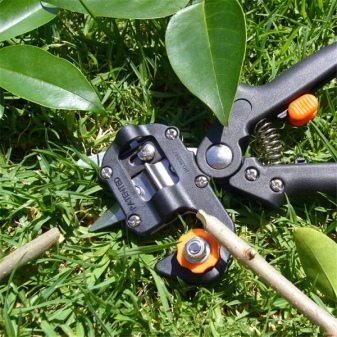
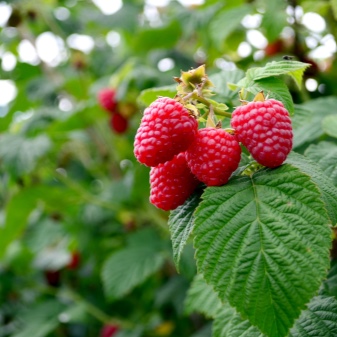
Why is the procedure needed?
Raspberry is a bushy plant that bears fruit with excellent taste and medicinal properties. Often, gardeners limit their work with raspberries only to planting sprouts. In this case, the berry beds become impassable, filled with shapeless shrubs, from which it is impossible to get a crop. Only a well-tended raspberry can produce a lot of berries. Pruning is an important step in caring for a raspberry bush.
Pruning is considered a measure aimed at improving the quality of the fruit and creating conditions for the formation of strong shrubs. It usually consists of the following stages of work:
- removal of dead shoots;
- pruning diseased, deformed or damaged branches;
- pruning healthy branches;
- removal of overgrowth on the roots.
Let's look at the main goals of pruning.
- Preservation of fruiting. The life of the shrub is two years, and after the season, the shoots that bore fruit die. As a result, to get a new crop, the plant needs to form bushes or pruning.
- Two-year-old dry, uncut branches contribute to the compaction of the bush and inhibit the growth of young stems. At the end, it is customary to leave about 10 strong young stems per square meter. Only in this way will the bushes receive the necessary amount of heat to give a rich harvest.
- Increased yield. Raspberry bushes have strong roots and always bear fruit well. This leads to a reduction in the number of ovaries and a deterioration in the quality of the berries. Pruning is also used to stop the uncontrolled spread of roots and shoots.
- The presence of many old branches and the expansion of the bush provoke the appearance of parasites, the development of a fungus and an increase in the number of bacteria, which negatively affects fruiting and leads to the death of the entire plant.
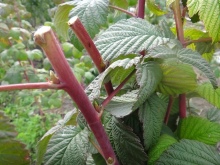
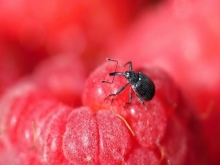
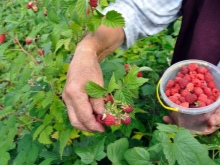
Overview of methods
There are two main options for pruning raspberries.
Double
Bushes begin to form in early March and finish next year. Below we will take a closer look at the double cropping scheme.
- The first processing is carried out from May 25 to June 5. Shoots should be cut 10 cm from the crown.
- In the fall, 4 to 8 new shoots 50 cm long appear. These shrubs must be dormant and no more pruning will be done this season.
- A year later, when the first leaves appear on the lateral branches, shorten the height by 13 cm. This stimulates growth from dormant buds, which can grow up to 10 times before the fruit begins to form.
Double pruning is relevant with a good knowledge of the conditions and timing of shortening the shoots. If you correctly apply all the rules, then a small raspberry tree will grow in place of one shoot, which will soon be covered with juicy berries and will give the gardener a rich harvest.
The disadvantage of this method is that the raspberry bushes become thicker, sunlight and air circulation in the bushes deteriorate, because of this, the tree can often get sick and sometimes lose crops.
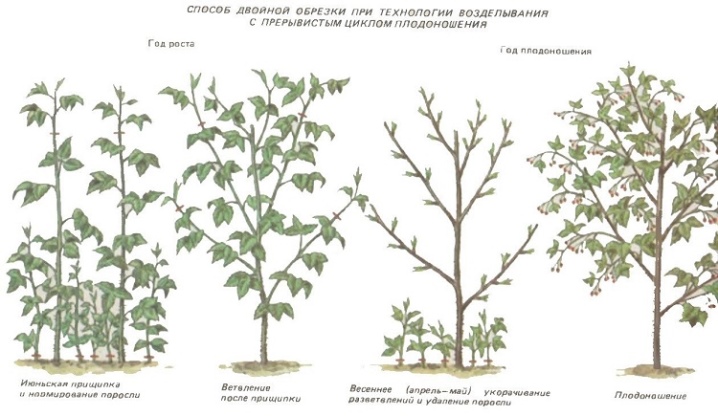
For the purpose of reproduction
From the cut off strong young shoots, the owners can get high-quality material for the propagation of bushes. To do this, the following points must be strictly observed.
- The upper bud is cut from the stem of the new shoot. The cut must be done under the sheet. This is done in order to stop its growth and direct all its power to the formation of roots.
- Cuttings should be treated with a growth stimulant, cuts should be made on the first internode. This will help stimulate root formation. Next, the cuttings must be placed in a jar of clean water. Water is poured onto the damaged internodes at the bottom. There is no need to replace it, you just need to top up as you grow.
- After the roots appear, plant the cuttings in place.
The main advantage of this method is that the cuttings retain all the qualities of the original variety.
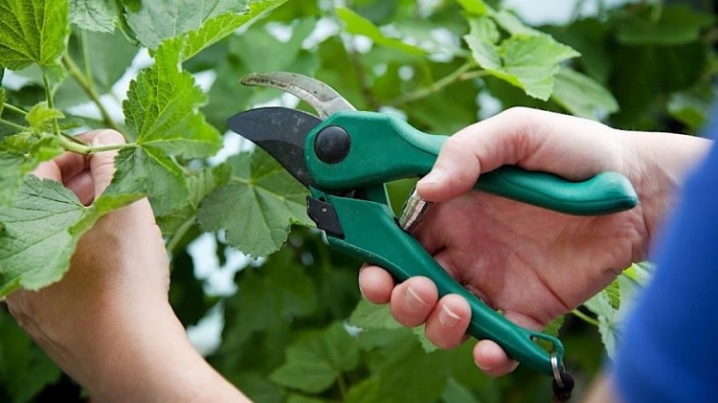
How to prune correctly for the season?
Processing must be completed in a timely manner. Some work is done during the fall harvest and others in preparation for the spring growing season.
Spring
Consider the main goals of spring pruning:
- stimulation of lateral kidney development;
- creating good lighting for the bush;
- suspension of the development of central shoots;
- preventive control over possible outbreaks of diseases and the appearance of insects.
Raspberries should be trimmed as soon as the snow has melted in the garden. No need to wait until the ground is completely warmed up:
- use garden shears to remove weak or dead buds; prune infected shoots;
- remove annual shoots, leaving about 7 pieces. on the bush;
- shorten the remaining branches so that each of the sprouts is about 130 cm long.
There is another way to shorten the stem length. This scheme is called the ladder method.
All stems are divided into four parts. The first part - the dying stems - are cut straight from the root. The other three types of shoots are pruned as follows:
- the first of them are cut at a distance of 10-15 cm from the top;
- the second - at a distance of 20 cm;
- the last group must be cut so that half of the stem remains.
Thus, the longer the shoots, the earlier they will bloom and begin to bear fruit, followed by short ones. Only at the end of summer will the cut halves begin to bear fruit.
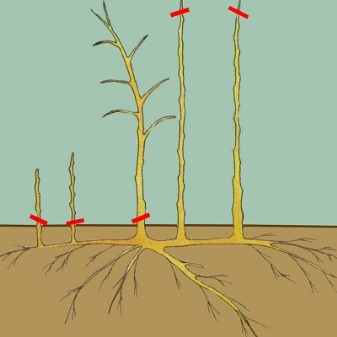
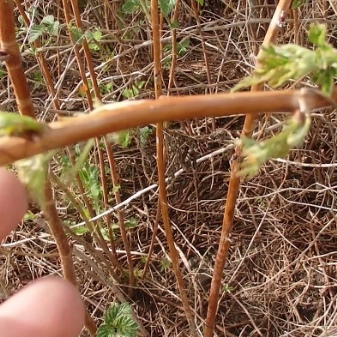
Summer
Summer work with raspberry bushes begins with prevention. When the bushes are in bloom, check to see if the shoots have wilted due to illness or viral infection. Cut off diseased shoots to the first healthy leaf.
In July and August, measures are also taken to prevent the growth of wide raspberries. The overgrowth must be removed immediately. This procedure is performed with a pruner. You need to dig to the depth of one bayonet, cutting off excess shoots. Summer processing of raspberries allows fruit-bearing branches to actively develop in the middle of the raspberry tree.
Autumn
Autumn processing of raspberries can be done at the end of the fruiting period, that is, in late summer or early autumn: by this time, two-year-old shoots that have borne fruit will already begin to die. To begin with, you should carefully examine the shrubs and determine the shoots that have finished bearing fruit, and new shoots that will bear fruit next year.
Autumn pruning consists of several stages.
- First of all, cut off the two-year-old branches of the seedlings at the base.
- Leave the strongest young shoots, that is, those that grow closer to the center of the bush.
- Weak and sluggish shoots should be cut as they will not bear fruit well.
- Fortified shoots located far from the bush are cut off from the main roots with a shovel and used as planting material. The transplant should be done in the spring or fall.
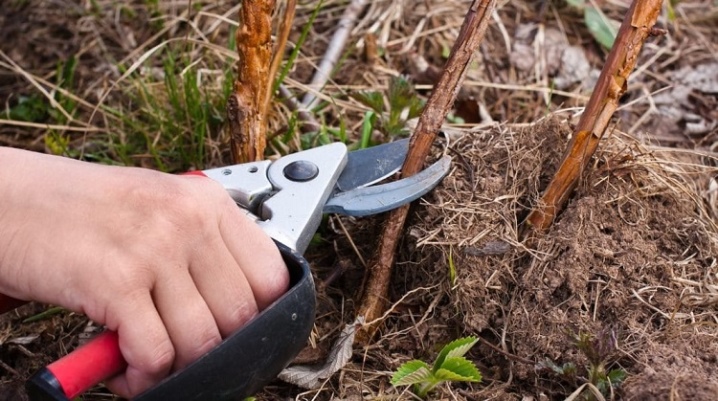
Pruning neglected bushes
Almost all summer residents are interested in whether it is possible to extend the growing season of a raspberry tree without destroying the old one, which has yielded a harvest of 10-15 years or more? It is possible, partial rejuvenation is best done on warm autumn or spring days. To do this, you need to act like this.
- Identify old, low-yielding shrubs and cut them back.
- Use a shovel to scoop up the area around the bush and then carefully cut off any remaining roots. You need to work carefully so as not to damage the adventitious buds, which are located along the main roots.
- Fill the resulting holes from the roots with compost. A year later, cuttings will appear growing from new rhizomes.
The process of cutting the roots must be continued for 3-4 years, old fruiting shrubs will be gradually removed.

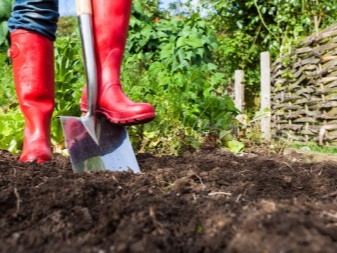
How to prune remontant varieties?
The processing methods described above are used by gardeners for common raspberry varieties that bear fruit once.
Repaired raspberry varieties have a number of advantages.
- They bear fruit many times during their growing season.
- These bushes are high-yielding, have upper buds on the shoots, therefore, bear fruit from the first year. Thus, if some of the branches die off after the first season, then the plant's yield drops significantly.
If you have chosen remontant varieties, the pruning process is carried out in the following order.
- After fruiting, cut off all aerial parts of the dead branches.
- Loosen the soil around the bush and water. This will keep the bushes from freezing in winter and will be strong enough to produce a lot of berries next year.
- After the first buds appear in the spring, disinfect them by removing frozen or dried buds to the first healthy one.
Healthy shoots will develop and produce a high quality berry crop. Observing the rules, every gardener can achieve the expected results in the form of a good harvest, delighting himself and his family with juicy berries and a reliable remedy for colds.
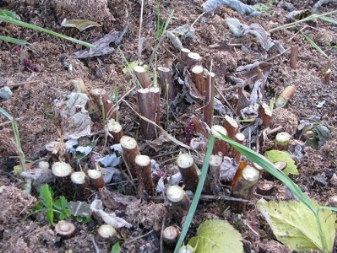
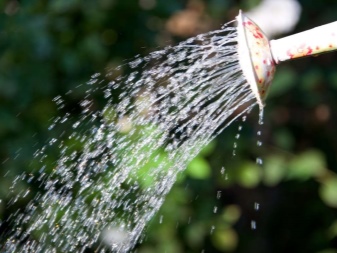
Top dressing after pruning
After fruiting, the plants need fertilization. Due to their active growth, raspberries deplete the earth, depriving it of important nutrients. In the fall, it is necessary to carry out complex operations to prepare the shrub for the cold season. Before fertilizing shrubs, experts recommend that you first clean them well, rinse them, removing weeds and dead shoots. It is necessary to provide raspberries with minerals and organic matter after pruning. Gardeners advise against using fresh fertilizer on raspberry trees, this will lead to the death of the plant.
The soil around the plants should be mulched every fall with a 10-15 cm layer of peat. This is especially important in areas with extreme cold. This improves the quality of the soil, and the plants receive nutrient minerals for the coming season.
- It is recommended to use a 2-3 year old fertilizer applied at the rate of 5 kg per 1 sq. m, at least once every 3 years. Use chicken manure diluted 1:20 with water. The solution is injected into the soil under the roots, 1 liter per plant.
- Ash restores the acidity of the earth and saturates raspberries with potassium. Before the onset of cold weather, add from 10 to 150 g for each plant. This procedure also helps to repel pests that spend the winter in the soil.
- Compost made from grass cuttings, fallen leaves and plant debris is an excellent source of nutrients: there is half a compost bucket per square.
- Growing green manure is considered an effective and popular type of organic fertilizer. Mustard is planted, mowed and processed to produce humus.
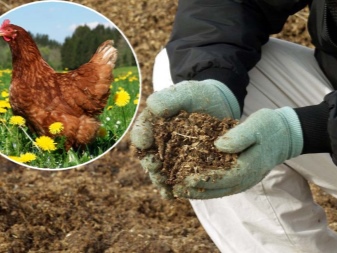
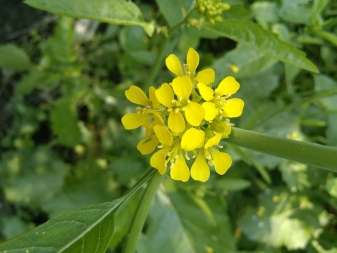
Organic and mineral fertilizers are used alternately. It is recommended to use substances containing phosphorus and potassium. Among the phosphate fertilizers, superphosphate is in priority: 65 grams should be placed in the ground at a depth of 10-15 cm.
You can make a fertilizer solution for a raspberry bush with your own hands.
- Fill a plastic barrel 2/3 full with cut grass or vegetables (carrots, beets, turnips), add 1.5 cups of wood ash, 150 g of chicken manure (vermicompost, compost) and 100 g of chalk.The resulting mixture must be poured with hot water, the vessel must be tightly closed and left to ferment for two weeks. Then dilute 0.5 liters of solution in 10 liters of water and allocate 3 liters for each plant.
- Combine 10 liters of water and 30 grams of potassium sulfate, spray the resulting mixture on 1 square meter of soil.
- Dilute 4 g of zinc sulfate and 6 g of manganese sulfate in 10 liters of water.
- Add 50 grams of superphosphate and 10 grams of ash to a 10 liter water bottle. Young plants should be watered more frequently.
Trenching is an effective maintenance method. Then a large amount of fertilizer solution is poured into them and mulched.
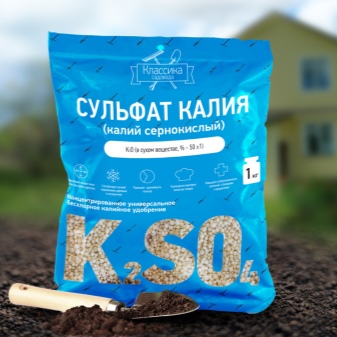
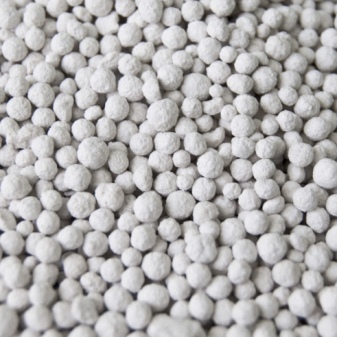









The comment was sent successfully.